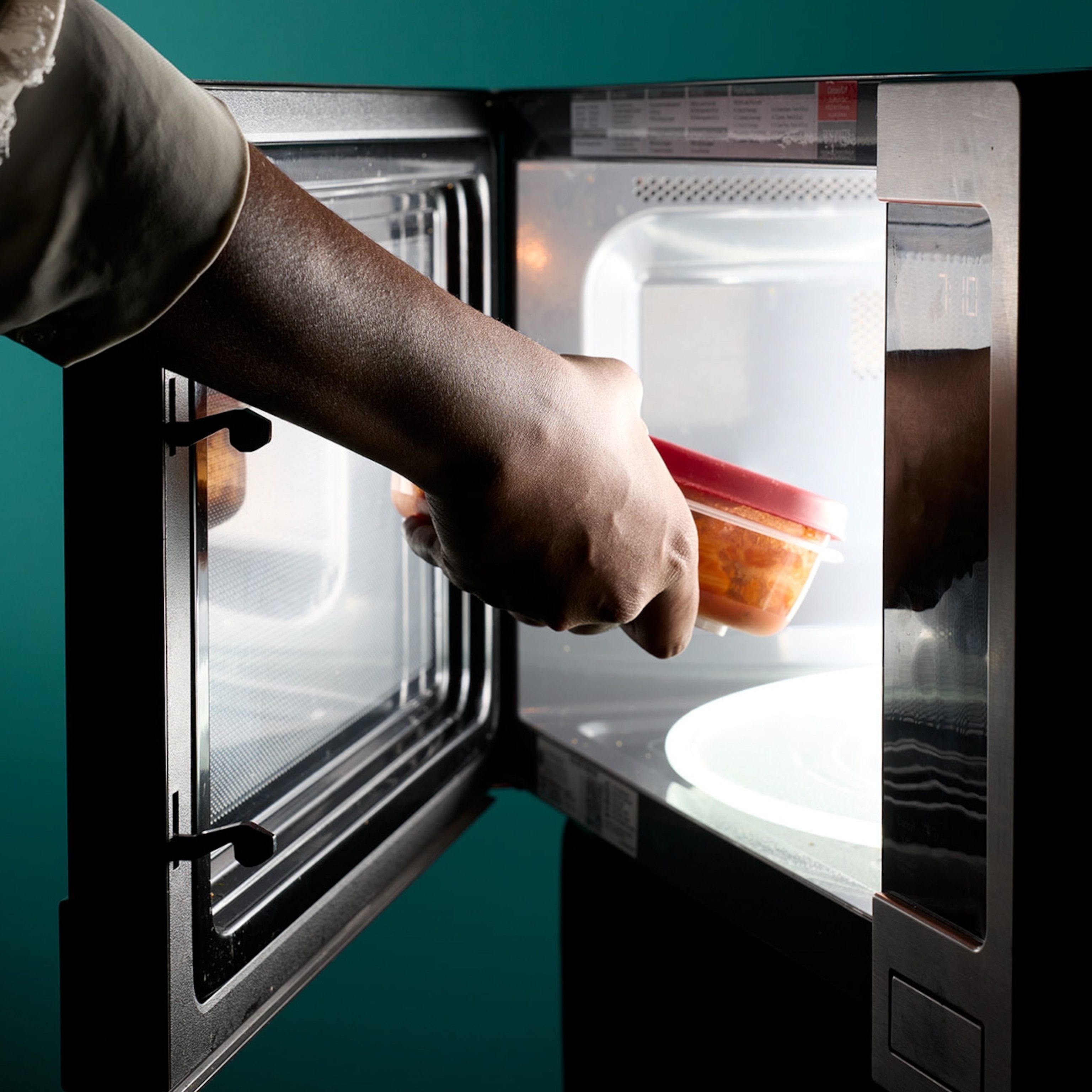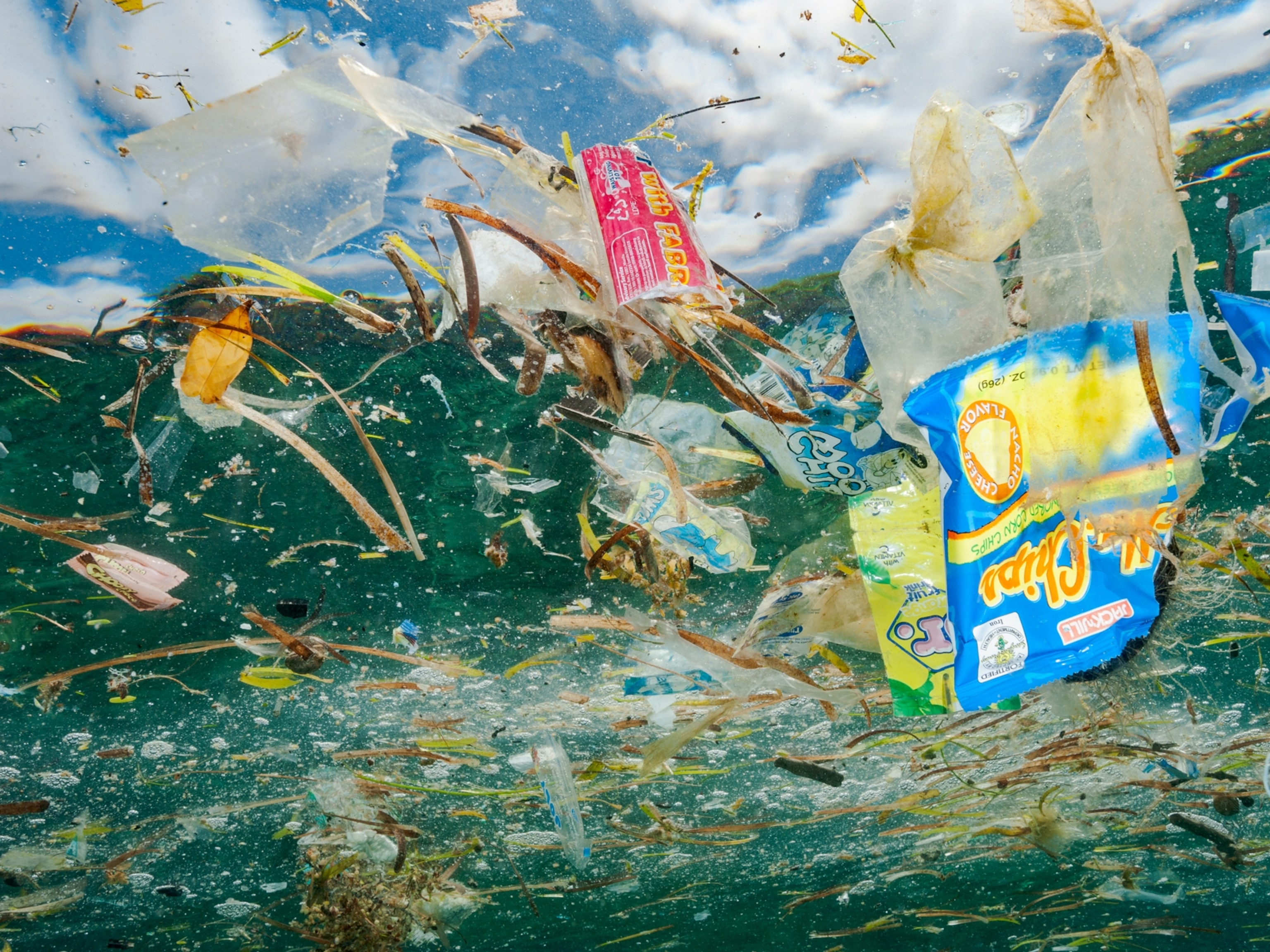Is cutting back on plastic really worth all the effort?
For the average person, trying to avoid plastics can feel overwhelming—and maybe pointless. Our writer asked two experts how they navigate our plastic-filled world.

Plastic is in our air, food, and water. An estimated 11 million metric tons of plastic end up in the ocean every year, a number expected to triple by 2040. Simultaneously, scientists having been finding microplastics in our brains, lungs, digestive tracts, and even in placentas. But exactly what they’re doing to our bodies is concerningly unclear. Early research suggests they might be linked to higher risk of heart attack and stroke, bowel disease, and respiratory disorders, although further research is needed to prove plastic causes or worsens these health conditions.
Given this uncertainty, it’s hard to find definitive answers on how much we need to avoid plastic, if at all. Should a concerned consumer attempt a rigorous zero-plastic lifestyle? Or do nothing while we wait for science to find answers?
To find out what a sensible approach to living with plastic might be, we asked the experts what they do in their own day-to-day routines. Ocean Conservancy director of ocean plastics research Britta Baechler, and Emory University microplastic and public health researcher Douglas Walker, study the environmental and health impacts of all the plastic in our lives. Here, they share how they navigate our plastic-filled world.
These interviews have been edited for length and clarity.
Why is it a good idea to take a serious look at our personal plastic consumption
Walker: There are over 16,000 different additives that are used in plastic materials … and a lot of those we have absolutely no toxicological data on. We don’t know whether they’re harmful or not.
That’s one area of ongoing research, trying to better assess the exposure to that wide range of additives, and what could be some of the potential health impacts of them. The thing that always surprises me and shocks me about plastics is just how high our exposure can be to plastic and plastic-related chemicals. [Microplastics] are in the air that we breathe, and the most common [route of exposure] is probably from our food and water.
Baechler: About 1,300 marine species have been found to ingest plastics. So, this isn’t just one species here and there, it’s becoming extremely common. We have reason to be concerned.
We’ve found microplastics on the top of Mount Everest… plastics have been found in the Mariana Trench, so they truly are everywhere. And that’s why it’s such an important action to prevent the release of microplastics at the source, in our homes.
I do think it’s important people note that in reducing plastic in our lives, it’s not about being perfect, it’s about being mindful.
How do you personally manage your plastic use in your day-to-day life?
Walker: That’s an interesting question, because I’m sitting in my car right now with plastic surrounding me, talking on my phone that has a plastic case. There are many situations and materials where we can’t replace plastic.
I think a perfect day for me in avoiding plastics is just to try to minimize eating food that had contact with plastics. I will not microwave something in plastic—that’s something I try to avoid if at all possible.
I don’t think we’ll ever be in a position where we can just fully eliminate the use of plastics, and I don’t know if we should even try. But I think there are opportunities to be mindful of your plastic use: for example, rather than drinking out of plastic bottles, have a reusable metal or glass container; don’t heat your food in plastic containers. There are some simple steps we can take that cumulatively go a long way.
Baechler: It’s safe to say heat and plastic food containers do not mix, and you and I can reduce our microplastic exposure by making just a couple of simple swaps for non-plastic materials. When I’m thinking about being out and about in the world, I’m dropping kids off at school, I’m running errands, I sometimes need caffeine… and disposable coffee cups are lined with plastic! But at home, heating up food in plastic containers is something I avoid now.
Laundry is [also] a tremendous source of microplastics in the environment. When we wash our clothes, we generate microfibers: pieces of plastic that break off and shed from our clothing. This water goes to wastewater treatment. The solids in wastewater sink to the bottom, and oftentimes they are scooped up and applied on fields as fertilizers.
Washing your clothing on a low temperature with mild detergent can help preserve fabrics and lead to fewer microfibers shed. External washing machine filters can be purchased… they filter all the water exiting your washing machine and capture up to 90 percent of those particles.
There are also [washer and dryer] balls you can throw in with your laundry and those collect fibers, or bags with fine mesh you wash your laundry in.
One study found just 60 companies are responsible for about half of the world’s plastic pollution. What are some of the big changes that could reduce plastic pollution and exposure?
Baechler: The best science points to a need for three big system-level changes, the first being sharp decreases in production of plastics––particularly single-use plastics. The Ocean Conservancy every year leads the international coastal clean-up… and far and away, the items we see most frequently on coasts and beaches around the world every year are single-use plastics, things like food ware, plastic bags, and cutlery.
The second is that we need to manage the plastics we do produce and have in circulation much better. A lot of infrastructure to recycle plastics is out of date, it’s overburdened, and so it cannot be extremely effective.
Also, you can use your voice to let decisionmakers know how you feel about plastics! Let brands know, if you’re shopping at the grocery store and you notice, ‘wow, this carrot is triple packaged in plastic!’... We’ve seen a lot of success in the plastic space with people advocating for change.
Walker: Aiming for more efficiency in packaging and reducing how food is packaged. Asking, ‘is it necessary to have individually wrapped things in plastic?’ The burden isn’t all on us to avoid plastics, I think there should be more efficiency from an industry and commercial perspective as well.
What advice do you have for anyone who might find this all overwhelming
Walker: It’s very challenging, and I think it’s important to recognize that it’s not an easy thing to do. We shouldn’t be upset with ourselves if we can’t be absolutely perfect when it comes to eliminating plastics or things that are in contact with plastic. Being mindful and doing the best we can goes a long way.
Baechler: Just because they’re ubiquitous, that doesn’t mean we have to accept plastics as the default in our culture. The more we internalize that, choosing durable, reusable options, skipping plastics where we can, being cognizant of what we buy, the less waste will end up in the environment, our ocean, and our communities.
Simple, everyday actions that each one of us do can truly ripple outward and cause lasting environmental benefits.








